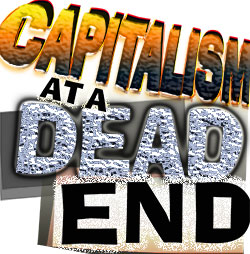The ‘recovery’ and the rich
 Between 2009 and 2012, years of so-called U.S. economic “recovery,” 90 percent of the increase in consumption was accounted for by just 20 percent of earners, according to a recent study. In the same period, 38 percent of the increase in consumption came from just the top 5 percent of earners. This trend is continuing right up to the present.
Between 2009 and 2012, years of so-called U.S. economic “recovery,” 90 percent of the increase in consumption was accounted for by just 20 percent of earners, according to a recent study. In the same period, 38 percent of the increase in consumption came from just the top 5 percent of earners. This trend is continuing right up to the present.
The study titled “Inequality, the Great Recession, and Slow Recovery,” discussed in the Feb. 3 New York Times, was carried out by Steven Fazzari of Washington University and Barry Cynamon of the Federal Reserve Bank, both in St. Louis.
The recession officially ended in 2009. Since then, spending by the top 5 percent has risen 17 percent, but spending by the bottom 95 percent has risen only 1 percent.
It is a misnomer to call this layer of rich and near-rich “earners.” In fact, most of their consumption fund comes from profits won playing the stock market and from other speculative ventures. The wealth they have accumulated comes at the expense of the workers.
The consumption fund the workers have, on the other hand, consists of wages, salaries or government payments and subsidies. This is an ever-shrinking proportion of the national income.
This distinction is very important. It means that the so-called consumer “recovery” depends on the flow of speculative wealth — speculation in stocks, real estate and other ventures which fuel the income that goes primarily to the rich and their consumption fund. Their spending, therefore, totally depends on the unstable foundation of the financial markets — not on the expansion of capitalist production, which is growing at a snail’s pace.
Furthermore, U.S. financial markets depend upon unstable world markets and the world economy, which is artificially propped up by central banks around the world. This was dramatically illustrated by a sudden drop in the New York Stock Exchange in mid-January after stock market and currency crises in Turkey, Argentina and Indonesia were followed by reports of declining growth rates in China and other countries.
The anemic growth of the U.S. capitalist real economy — the economy that employs workers — is completely insufficient to absorb the growing millions who are unemployed or underemployed or have dropped out of the work force. High technology further decreases the need of the bosses for labor.
So capitalism has very little foundation on which to recover.
Masses left out of recovery
This study and other recent information have profound implications for understanding the dead-end state of the capitalist system.
Wall Street analysts know about this trend and big business knows about it, too. As one financial mouthpiece, John G. Maxwell of PricewaterhouseCoopers, bluntly told the Times: “Those consumers who have capital like real estate and stocks and are in the top 20 percent are feeling pretty good.”
The Times gives the example that “At General Electric, the increase in demand for high-end dishwashers and refrigerators dwarfs sales growth of mass-market models.” GE’s fastest growing brand of refrigerators, the Café line, sells at $1,700 to $3,000.
Spending at the upscale restaurant chain Capital Grille, where the average person spends $71 per meal, has been increasing 5 percent a year for the last three years.
In Manhattan, the exclusive men’s clothing store, Barney’s, is expanding into space vacated by Loehmann’s, a store where working-class women could buy bargains on fairly high-quality apparel. Loehmann’s is in bankruptcy and is closing 39 stores.
Sears and J.C. Penney, both of which sell to workers, are in crisis. Sears is closing its flagship store in Chicago, and Penney will close 33 stores and lay off 2,000 workers this year.
The least expensive Dollar Tree and Family Dollar stores, on the other hand, are thriving as workers’ wages go down and unemployment and underemployment go up.
All of this is no news to the mass of the workers and the oppressed, who keep hearing about the recovery but are experiencing only increased hardship. The near rich, the rich and the super-rich are driving the so-called consumer “recovery.” The masses know full well they are left out of the recovery picture.
As the Times noted about the study findings: “Even more striking, the current recovery has been driven almost entirely by the upper crust.”
Speaking the mind of an important section of the ruling class who are reading the behind-the-scenes statistics, study author Fazzari noted that for the economic recovery to depend on the small slice of the population who are rich means it depends on the rise and fall of the stock market and/or the real estate market.
Of course, the corporations would need a vast expansion of the mass market to get anywhere near an economic rebound that would put tens of millions back to work at decent-paying jobs. But this mass market is being destroyed day by day with the impoverishment of the workers, caused by corporate and government austerity, along with the steady introduction of job-killing technology.
As Fazzari concluded about the shaky foundation of the economy, “We might be able to muddle along, but can we recover?”
What he and his fellow Wall Street worriers cannot admit is that the crisis of capitalist overproduction has brought the system to a dead end of slow growth, stagnation and collapse as its only future. For the workers, rebellion and struggle are the only way out.
Goldstein is the author of “Low-Wage Capitalism” and “Capitalism at a Dead End,” which has been translated into Spanish as “El capitalismo en un callejón sin salida.”

